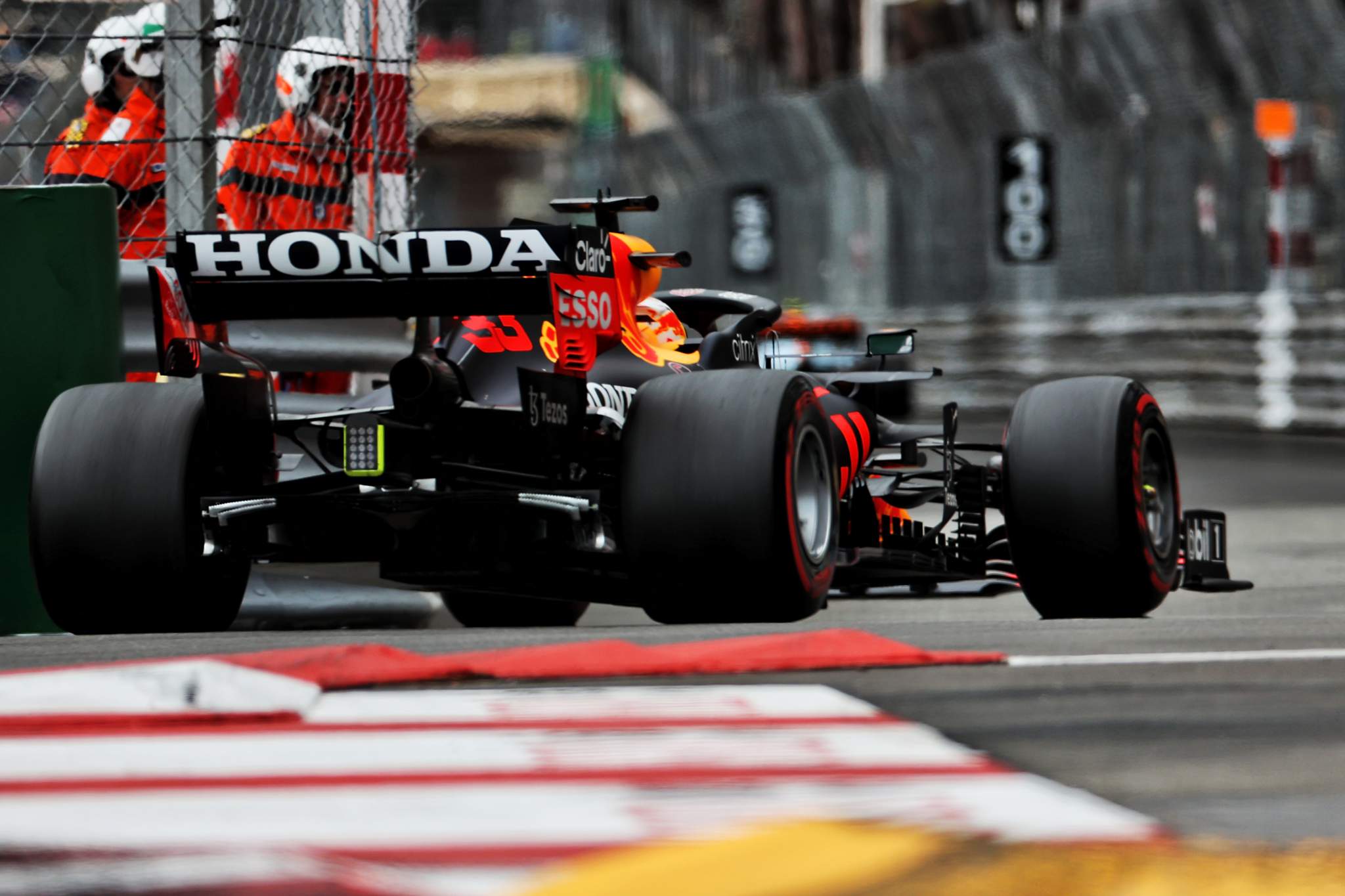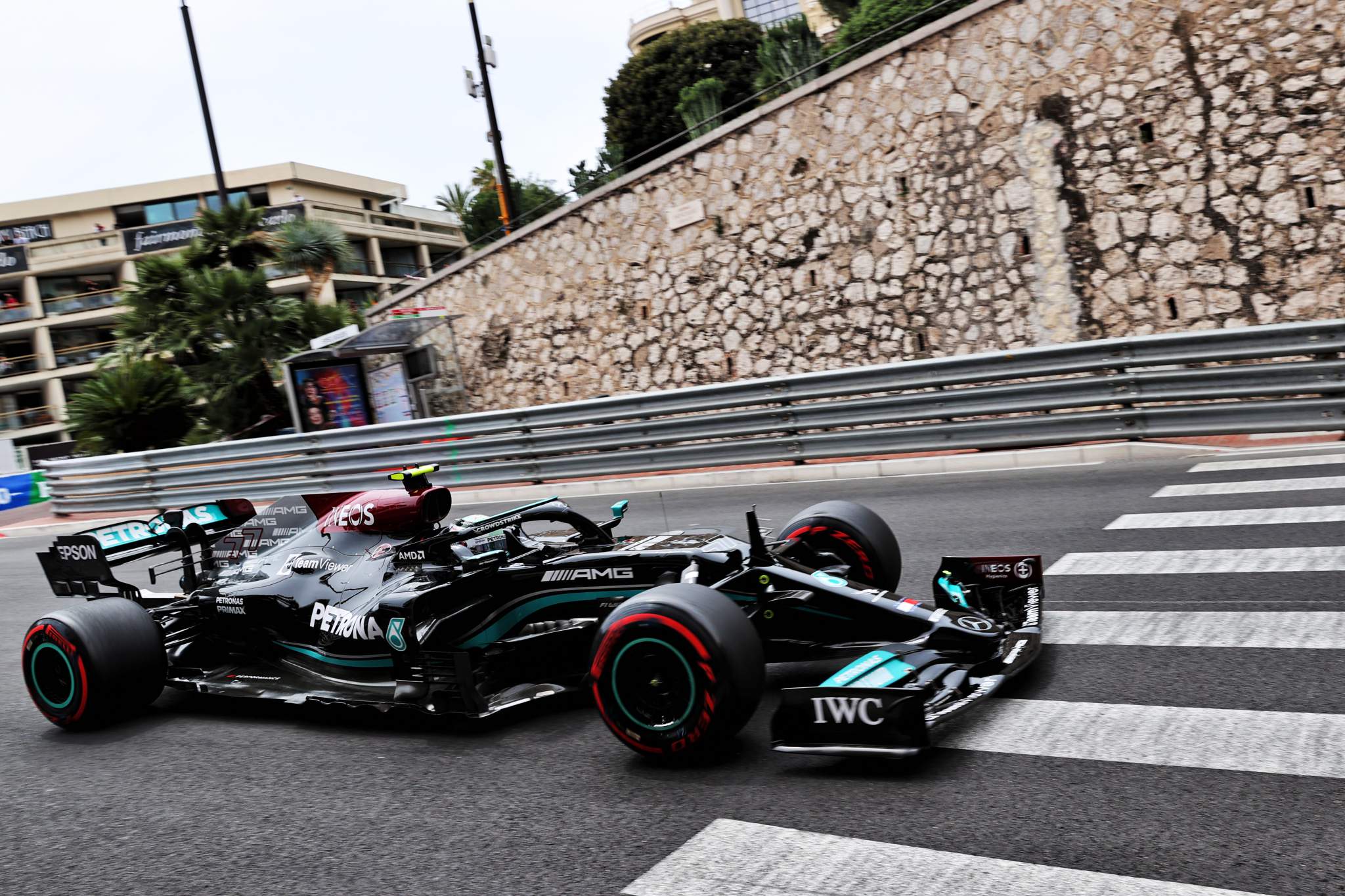Up Next

Charles Leclerc’s way of hanging everything on the line in a qualifying lap – that way he has of stretching the elastic – has many times put his Ferrari further up the grid than it rightfully deserved.
But that approach around Monaco, which he didn’t appear to temper at all, even on Thursday, always seemed extra perilous. So it proved. But only after setting the pole time.
Back at Singapore 2019 when he and Lewis Hamilton were chasing down pole, a comparison of their onboards showed quite clearly how Leclerc’s margins were even smaller than Hamilton’s – the almost zero gap he was leaving to the barriers on the way into the turns so as to squeeze a few millimetres more track space, was apparent on several of the corner approaches.

A comparison of his Monaco Thursday FP2 fast lap with Hamilton’s painted a similar picture, Lewis giving the barriers exiting Tabac a few inches of respect at this early stage of the weekend, Leclerc absolutely riding up to them with full commitment.
He doesn’t drive every lap like this, but you regularly see him practicing his attack in the practices, ready to unleash it all in the dying seconds of Q3.
Combined with a track which fully rewards the Ferrari’s great low-speed behaviour and doesn’t punish its relative lack of high speed aero and power, he was a contender for pole for the first time since 2019, when he set seven of them.
On that Singapore occasion Leclerc’s pole bid featured him securing the top spot despite a wild oversteering moment across the Anderson Bridge.
This time, he secured it with his very committed first Q3 lap and crashed on his second – thwarting the pole bids of the following Max Verstappen, Valtteri Bottas and his own Ferrari team-mate Carlos Sainz Jr, the respective second, third and fourth fastest qualifiers.
But would any of them have beaten Leclerc’s time? They each believed they’d been denied a legitimate shot at pole by the Leclerc red flag.
Given that Leclerc’s second flying lap was not shaping up as well as his first, their claims look realistic on the surface, but under closer scrutiny less so.
“I was one and a half tenths off on the second lap,” admitted Leclerc.
“On my best lap I touched the [barrier] there too. On this lap I tried to go for a bit more but bounced it off.”
That contact broke the track rod and he had a near-replica of Verstappen’s respective qualifying and practice accidents there in 2016 and ’18.
On this occasion, Verstappen – on the second flying lap of his final Q3 run – had just set the fastest Sector 1 time of all at 18.438s.
“I was one-and-a-half tenths up before going into the tunnel and I knew on the previous lap I’d made a mistake in T10-11 [the chicane] where I lost more than a tenth so I knew pole was on,” said Verstappen.

“I had a lot more grip on the tyres and so the last section would have improved. But that’s all would have, could have.”
The one-and-a-half tenths he refers to is relative to Leclerc’s time from the first runs (the one which would ultimately stand as pole). But crucially, the Red Bull was not strong in Sector 2 (from Mirabeau to the exit of Tabac) relative to the Ferrari all weekend.
On the previous run – where Verstappen lost that 0.1s at the chicane – he was 0.366s slower than Leclerc through that middle sector.
So in the imaginary scenario of Leclerc not crashing but not improving on his previous best lap, let’s look at what Verstappen would have needed to do on that final lap.
He was ahead by 0.174s at Mirabeau. This advantage was already reduced to 0.15s by the time Verstappen reached Portier, as the Ferrari’s greater low speed grip was again apparent. This was just the beginning of the sector through which the Ferrari had been 0.366s quicker.
But let’s give Verstappen the 0.1s he reckoned he’d lost at the chicane on his previous best, so making the Ferrari potentially only 0.266s quicker in sector 2.
Between Portier and the end of the lap, Verstappen would need to not drop more than 0.15s to the time Leclerc had already done – including a sector in which the Ferrari had been 0.266s quicker. Maybe, given the greater track grip. But far from certain.

Bottas tells a similar story: “By Turn 6-7 [Loews and the first part of Portier], I was one-and-a-half tenths up.” To the Leclerc pole time. But the Mercedes was no quicker than the Red Bull through the middle sector (which comprises 47% of the lap) and regularly half-a-tenth slower through the final sector.
As for Sainz, he’d been brilliantly fast in sector 1 on his first Q3 run (18.443s, 0.169s faster than Leclerc). Even Verstappen’s purple S1 time on his second run was only five-thousandths faster. But he’d lost a big chunk of time in the final sector on that lap.
For his second Q3 run he was nowhere near as fast through Sector 1 as on his first run – but crucially he was only 0.077s slower than Leclerc at that point.
With Leclerc’s second Q3 lap falling short, might Sainz – who was every bit as quick in sectors 2 and 3 – have been able to use the greater track grip to steal pole?
It’s maybe the strongest claim of the trio who were robbed. It figures that of the three of them, he was the most distraught.
“You never know in the next five years of your life, how many chances you’re going to have to go for it in Q3 and put it on pole for Ferrari around Monaco,” he said.
“Tomorrow I think I have the pace to win if I’m fully honest.
“But I’m starting fourth. In Monaco starting fourth, even if you have the pace to win, it’s not the easiest.”







